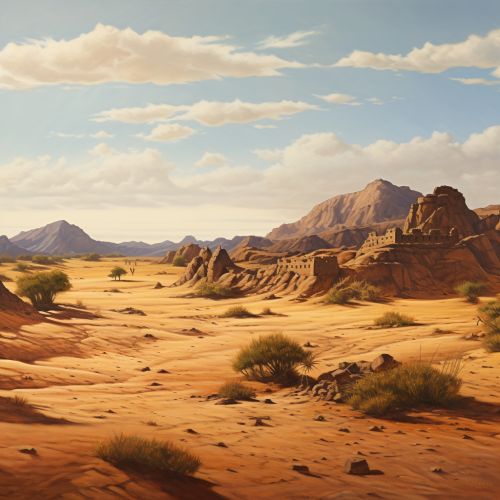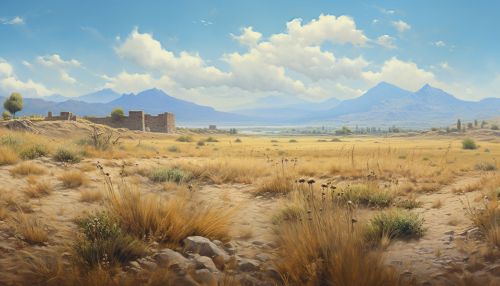Caral-Supe civilization
Overview
The Caral-Supe civilization, also known as the Norte Chico civilization, was a complex pre-Columbian society that included as many as 30 major population centers in what is now the Norte Chico region of north-central coastal Peru. It is the oldest known civilization in the Americas and one of the six sites where civilization separately originated in the ancient world, arising around the 30th century BCE (5,000 years ago).
Geography
The Caral-Supe civilization was located in the arid desert of the northern coast of Peru, approximately 200 kilometers north of modern-day Lima. The civilization was centered around the fertile valleys of three rivers: the Fortaleza, Pativilca, and Supe. These rivers provided the necessary water resources for agriculture, which allowed the civilization to sustain itself and grow.


Society
The society of the Caral-Supe civilization was complex and hierarchical. It was composed of a network of city-states, each with its own governing authority. The largest and most influential of these city-states was Caral, which is believed to have been the administrative and religious center of the civilization. The society was divided into various social classes, including an elite class of priests and bureaucrats, a middle class of artisans and merchants, and a lower class of farmers and laborers.
Economy
The economy of the Caral-Supe civilization was based on agriculture, fishing, and trade. The civilization cultivated a variety of crops, including cotton, squash, beans, and guava. The abundance of marine resources along the coast also played a significant role in the economy. The civilization developed an extensive trade network, which extended as far north as Ecuador and as far south as central Peru.
Architecture
The Caral-Supe civilization is notable for its monumental architecture, which includes large pyramid-like structures known as platform mounds, sunken circular plazas, and residential complexes. The largest of these structures is the Pyramid of Caral, which covers an area of approximately 65,000 square feet and stands 60 feet tall. The architecture of the Caral-Supe civilization reflects a high degree of planning and coordination, suggesting a powerful central authority.
Religion
The religion of the Caral-Supe civilization is not well understood, due to the lack of written records. However, the presence of large ceremonial structures and artifacts with religious motifs suggest that religion played a significant role in the society. The civilization is thought to have practiced a form of ancestor worship, with the platform mounds possibly serving as tombs for the elite.
Decline
The Caral-Supe civilization began to decline around 1800 BCE, for reasons that are not entirely clear. Some theories suggest that environmental changes, such as a shift in the course of the rivers or a decline in marine resources, may have contributed to the civilization's downfall. Other theories suggest that social unrest or warfare may have played a role.
Legacy
The Caral-Supe civilization left a significant legacy in the form of its monumental architecture, which influenced subsequent civilizations in the Andean region. The civilization also made significant contributions to the development of Andean culture, including the development of the quipu, a system of knotted strings used for record keeping.
